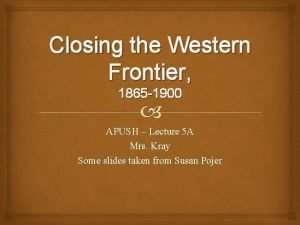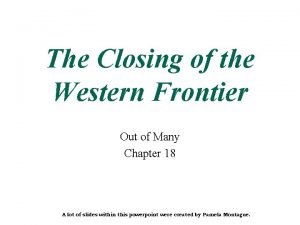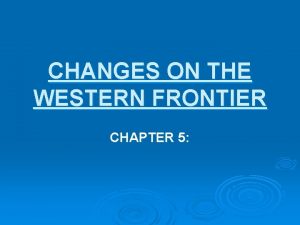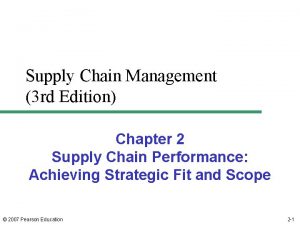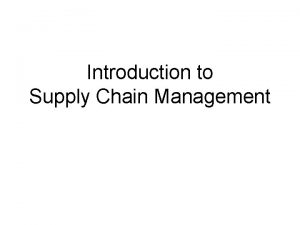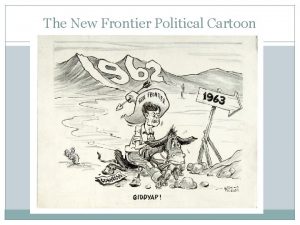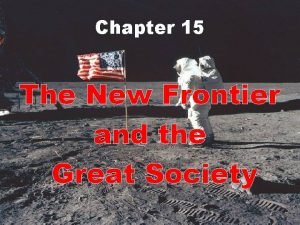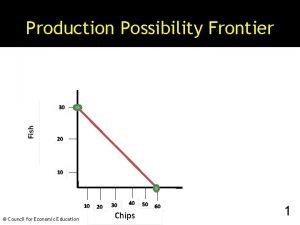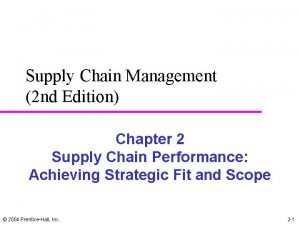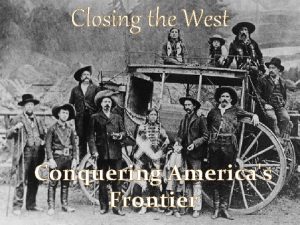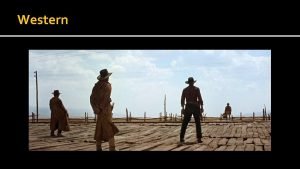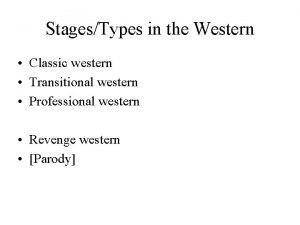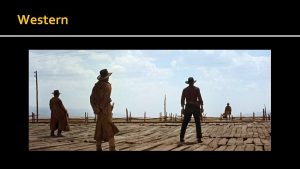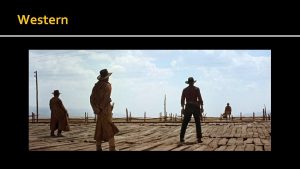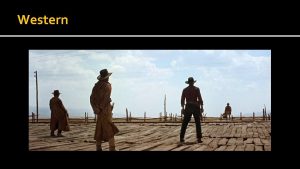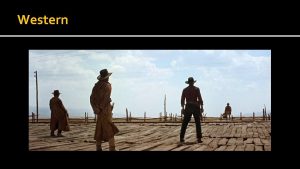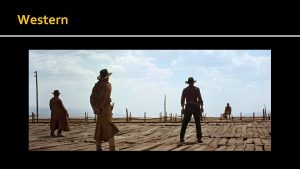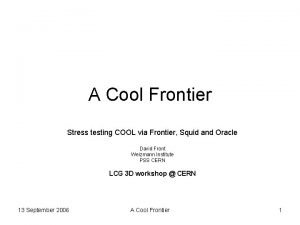The Closing of the Western Frontier An Overview

















- Slides: 17

The Closing of the Western Frontier- An Overview MISS EVANS January 22, 2013

The End of the Great West n n n 1865: Great West wild expanse, about 1, 000 miles on each side—habitat of Native Americans, buffalo, prairie dog, coyote 1890: Entire domain carved into states and the four territories of Utah, New Mexico, and “Indian Territory (Oklahoma) How did this happen?

The Clash of Cultures on the Plains n n Native tribes themselves already warring, adapting, changing their way of life White soldiers and settlers entering the plains before the Civil War accelerated this process n n Brought disease Hunting and grazing of own livestock decimated bison population n Shrinking buffalo population contributed to more native warfare

The Beginnings of the Reservation System n n n 1851 Treaty of Fort Laramie: Established boundaries for the territory of each tribe, attempted to separate Indians into two great “colonies” By 1860 s, whites accelerated this process, moved Natives into smaller confines False promises to Indians: When signed treaties, US promised would leave Natives alone and provide food, clothing and other supplies. Usually not the case. n In the decade after the Civil War, army troops warred with Plains Indians to herd them onto reservations. Plains Indians had advantage with superb horsemanship.

Brutality of Indian Wars n n Aggressive whites often shot peaceful Indians Sand Creek Massacre, 1864— Chivington’s militia massacred 400 Indians who thought were immune from attack Indians too responsible for brutality—ex: Fetterman massacre Trail of Broken Treaties: Government promises to stay out of Indian territory, constantly breaks that promise when its to their advantage

Indians Resist White Encroachment n n n Sioux wiped out Custer and his troops at Battle of Little Bighorn (1876) Chief Joseph and Nez Perce attempted to escape US authorities trying to herd them onto reservation Apaches under Geronimo put up fierce resistance, flee into Mexico to avoid reservations

The “taming” of the Indians n n n US did succeed in herding Indians onto reservations US claimed reservations would help Indians keep their cultural autonomy, really it made them isolated wards of the government Why did whites succeed? n n Railroads—helped break up land, supply white settlers and troops Disease Use of force Decimation of buffalo

Black Elk Speaks n “Once we were happy in our own country and we were seldom hungry, for then the two-leggeds and the fourleggeds lived together like relatives, and there was plenty for them and for us. But then the Wasichus (white people) came, and they made little islands for us…and always these islands are becoming smaller, for around them surges the gnawing flood of Wasichus. ”

The Decimation of the Buffalo n n n In beginning, tens of millions of buffalo Key to Native American life: food, fuel, clothing, weapons, tools With the building of the railroads, whites began killing off buffalo n n n Used for food For hides Often, killed for sheer amusement Targeted buffalo as a way of killing off the Plains Indians 1865: 15 million buffalo 1885: less than a thousand!

Critique of Indian Policy and the Push for Assimilation n n Helen Hunt Jackson’s books, esp. A Century of Dishonor Many humanitarians misguided in critique: wanted Indians to assimilate so as to avoid attacks of whites n n n Withheld food from Natives to force them to give up own religion and customs 1884, persuaded US government to outlaw sacred Sun Dance Led to 1890 Massacre at Wounded Knee— 2000 killed just for practicing Ghost Dance

Dawes Act (1887) n n All part of push towards assimilation Dissolved tribes, wiped out tribal ownership of land, set up individual Indian homesteads of 160 acres. If Indians behaved like “good white settlers” would get ownership of land citizenship Extra land sold to railroads and white settlers, proceeds used to civilize and educate native peoples.

Forced Assimilation n n n Established Indian schools to separate children from tribes, teach them English, as well as white values and customs. “Kill the Indian and save the man” Dawes Act tried to kill collective ways of life of Indians, make them into individualists Tribes lost land—by 1900, 50% of what they had held 20 years earlier Forced assimilation remained policy until “Indian New Deal” of 1934 Still, with end of warfare, Indian population on reservations began to increase.

Growth of Mining Frontier n n n Catalysts: Conquest of Indians and coming of railroad Fortune seekers continued to pour in, especially after discovery of gold at Pikes Peak, Colorado and Comstock Lode in Nevada (59 ers) Rise and fall of boomtowns Corporations becoming more involved in mining Women played key role on frontier—earned vote in Western states first (Wyoming, Utah, Colorado, Montana) Effects: Facilitated building of railroads, intensified conflict with Indians, refueled silver debate.

The Rise of Ranching n n With railroads, cattle could now be shipped across country, to industrial meatpacking industry Began “Long Drive” in West— cowboys drove herds over plains until reached railroads. This practice threatened by incoming settlers and sheep herders, built fences conflicts. Overtime, cattle-raising became more of a business, learned to avoid perils of overproduction and overgrazing.

Multiple Choice Practice n The Plains Indians were finally forced to surrender n n n A. Because they were decimated by their constant intertribal warfare B. When they realized that agriculture was more profitable than hunting C. After such famous leaders as Geronimo and Sitting Bull were killed D. When the army began using artillery against them E. By the coming of the railroads and the virtual extermination of the buffalo

Multiple Choice Practice ctnd. n The nineteenth century humanitarians who advocated “kind” treatment of the Indians n n n A. Had no more respect for traditional Indian culture that those who sought to exterminate them B. Advocated allowing the Ghost Dance to continue C. Opposed passage of the Dawes Act D. Understood the value of the Indians’ religious and cultural practices E. Advocated improving the reservation system

Multiple Choice Practice ctnd. n The bitter conflict between whites and Indians intensified n n n A. During the Civil War B. As a result of vigilante justice C. When big business took over the mining industry D. As the mining frontier expanded E. After the Battle of Wounded Knee
 Closing of the western frontier
Closing of the western frontier Frontier thesis apush
Frontier thesis apush Dawes severalty act of 1887
Dawes severalty act of 1887 Frontier detectors for frontier physics
Frontier detectors for frontier physics Changes on the western frontier
Changes on the western frontier Space the final frontier these are the voyages
Space the final frontier these are the voyages Iordanis petsas
Iordanis petsas Frontier molecular orbital theory
Frontier molecular orbital theory Implied demand uncertainty in supply chain management
Implied demand uncertainty in supply chain management Obsolescent “frontier” civilization
Obsolescent “frontier” civilization Cost-responsiveness efficient frontier
Cost-responsiveness efficient frontier Obsolescent frontier civilization diagram
Obsolescent frontier civilization diagram New frontier definition
New frontier definition Chapter 15 the new frontier and the great society
Chapter 15 the new frontier and the great society Production possibility frontier model
Production possibility frontier model Vertical line interior design
Vertical line interior design Obsolescent frontier civilization diagram
Obsolescent frontier civilization diagram Intraoperation scope
Intraoperation scope

